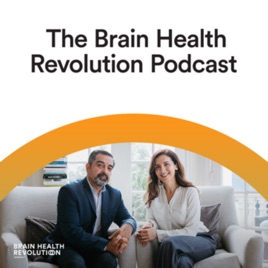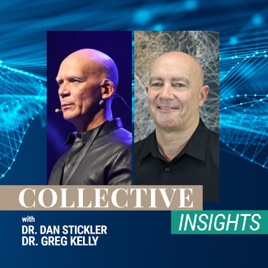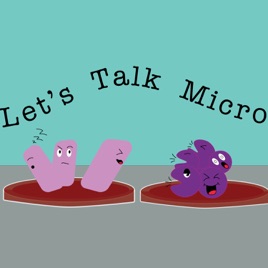
Advertise on podcast: Chasing Compliance: The Global Regulatory Podcast
Rating
5 from
Country
This podcast has
18 episodes
Language
Publisher
Explicit
No
Date created
2020/08/14
Average duration
39 min.
Release period
38 days
Description
Chasing Compliance, presented by Global Regulatory Writing & Consulting, is a podcast focused on regulatory strategy, achieving and maintaining regulatory compliance, and the influence of regulation on healthcare overall. Guests include highly accomplished regulatory professionals, medical writers, scientists, engineers, and clinicians giving their take on some of the most complicated and challenging topics in clinical development.
Podcast episodes
Check latest episodes from Chasing Compliance: The Global Regulatory Podcast podcast
All About ADDM - New Technology To Manage Regulatory Communication Projects and Analyze Regulatory Feedback
2022/04/22
In this podcast we introduce one of Global’s latest ventures, the Global Regulatory Technology Operations (GRTO) team and discuss their newest applications, the Advanced Deficiency Data Management (ADDM) Trend and the Advanced Document Data Management (ADDM) Track applications. Managing regulatory communication and feedback from Competent Authorities or Notified Bodies can be much more than a […]
more
Tips and Tricks for Performance Evaluation Reports (PERs)
2022/01/21
This episode of Chasing Compliance is for those working on regulatory submissions for in-vitro diagnostic (IVD) medial devices. Today we talk to our resident Performance Evaluation Report (PER) expert, Bethany Hosford provides suggestions on how to improve your EU IVD regulatory submissions including PERs and their associated documents.
2:15 – Brief background of the In vitro Diagnostic Regulation (IVDR) and the Performance Evaluation Report (PER)
3:15 – Items to tackle prior to beginning to write PER
4:15 – Bethany’s recommendation for starting the PER process
Collect as many source documents as possible (eg design files, technical file, risk documentation etc) early int he process.Collect and review all clinical and analytical data available. Try to identify gaps early. Plan the report – what is your strategy? What claims do you need to support? Which General Safety and Performance Requirements (GSPRs) apply?Write your Performance Evaluation Plan (PEP). Clearly characterize your data sources information and strategy for the PER.
6:30 – Tips for finding clinical data or addressing gaps for challenging IVDs. Bethany answers the question, what do you do if you device is mentioned in several articles, but it isn’t a focus?
9:15 – Do you need to consider your audience when preparing a PER? If yes, how should you do that?
10:30 – What is the best approach for reviewing and summarizing data? Should it be done piecemeal or holistically.
12:00 – Tips for writing associated documents such as the Analytical Performance Report (APR), Scientific Validity Report (SVR), and Clinical Performance Report (CPR).
14:10 – What is required to determine scientific and clinical validity in the case of a companion diagnostic (CDx) or other IVD? Where is this information found? BRCA – Gene which is highly associated with the development of breast cancer
18:00 – When is enough data enough? How do you know you have enough clinical data? What if you don’t have clinical data, what should you do?
20:45 – Bethany’s tips for preparing to write a PER. Key takeaways:
Understand the scope of your document.Ensure you have a well-defined, MDR/IVDR compliant purpose statement.Identify your claims and make sure you have the data to support those claims.Make sure your data, claims, purpose, and scope are all aligned prior to writing.Ensure you have all appropriate tests and documentation pertaining to the IVD under evaluation.
24:45 – What to do if you find you are missing data or have data gaps during the writing process.
28:45 – What should you do if you don’t fully understand the device you are working on or how to best summarize clinical or analytical data?
30:15 – Summary of topics discussed up to this point and Bethany’s tips for staying organized throughout the PER writing process.
33:45 – Generally, how long does it take to write a PER? What are your tips for pacing?
35:15 – Bethany’s tips for finalizing a PER.
40:00 – What is the value of templates in the PER writing process?
more
Part 2 - Tips and Tricks for Technical Writing
2021/12/23
Ready to take your technical writing to the next level, but not sure where to start? Would you like to learn some tips to freshen up your writing approach? In this episode and the next we share more of our favorite tips and tricks for technical writing. Our guide, Jennifer Petrie Signore, PhD has spent years working to become the best and most versatile technical writer possible, and she shares her tips with you. In this episode, we cover a wide range of topics, such as:
Document review and completionSoftware tools for technical writersHow to better leverage the tools you use each dayWhen to involve your teammatesHow to improve the review process
1:30 – Recap of last episode.
2:30 – What is Jenn’s process for finishing a document.
5:15 – How to make Microsoft Word work for you and speed up your writing process. Jenn discusses tools within word which help improve the writing process, such as:
Document sectionsStyles toolTable propertiesTable anchorsPage layout (eg landscape and portrait)
9:45 – Other types of software which may help your writing process, such as:
ExcelEndNote – Reference ManagerPerfect It
17:30 – Jenn provides her tips for finalizing documents including how to conduct final editing and revision activities. In summary:
Step awayAsk a colleague for helpTips for editing and revision.
22:00 – Review as a team effort: tips for leveraging teammates and colleagues. When is it time to hand a document over? When is it appropriate to reach out for feedback?
31:45 – Final thoughts, summary, and wrap-up
more
Part 1 - Tips and Tricks for Technical Writing
2021/12/09
Ready to take your technical writing to the next level, but not sure where to start? Would you like to learn some tips to freshen up your writing approach? In this episode and the next we dive into some of our favorite tips and tricks for technical writing. Our guide through the next two episodes is Jennifer Petrie Signore, PhD. From the start of her graduate training, Jenn was focused on becoming the best and most versatile technical writer she possibly could be. In this short series, Jenn shares what she has learned throughout her 15+ years of technical writing experience. In this episode, we cover a wide range of topics, such as:
Why you should always follow directions,The role and value of templates and rubrics,The importance of clarity, proper word choice, and succinctness, andHow to get unstuck or overcome roadblocks when working on long, complex documents.
We cover a lot of information in this episode. If you miss something, we’ve summarized the key points below.
2:00 – Jennifer’s provides some background on her technical and scientific writing training and experience. Jamie and Jenn briefly discuss the importance of writing quality and skill in the technical disciplines and options for training.
10:00 – Are there any general misconceptions or mistakes you would like to address right out of the gate?
Take time to learn about the purpose of the document and the audience.Understand and follow the directions or instructions assocaited with the document.
13:25 – Starting the process: how to use templates and instructions to create a strong foundation. Use the template to guide your writing. Make sure you follow the instructions and providing the information the reader is looking for.
19:25 – How to know how much detail to include? When is it time to “go down the rabbit hole?” When is it appropriate to provide a high-level summary? Look for rubrics and previous work. Don’t hesitate to reach out to the client or the audience.
How much do they really need to know?How much do they want to know?How much do they already know?What is the scope of the document?Is the information still relevant to the document?
29:10 – The importance of clarity in technical writing. Tips and tricks for improving clarity.
Avoid wordy sentences or flower-y language.Let the source documents dictate the content.Do not draw conclusions you cannot support with evidence.As yourself: “Is this still relevant?” “What does this add to the discussion?” “Is it necessary?”
37:40 – Jennifer’s tips for getting unstuck or moving through challenging sections. Leave yourself landmarks.
41:00 – Overall episode summary.
44:00 – What are we going to cover in part 2?
more
Part 2 - Abbreviated New Drug Applications: Fundamentals, Challenges, and Agency Communication
2021/11/24
This episode is Part 2 of a two-part episode on Abbreviated New Drug Applications (ANDAs). We continue our conversation with our ANDA expert Sandra Kircus. In this part, Sandra provides advice on how to manage ANDA projects, the importance of strong project management, and provides suggestions for project management tools. She also shares her thoughts on how to regulatory leaders can optimize the ANDA writing process and how to optimize the ANDA process fro companies outside of the United States referred to as xUS companies. Sandra and Jamie discuss why having strong US agent for xUS companies is important. While this advice is focused on xUS companies, it also rings true for US companies as well.
2:30 – Tips for general approach to writing ANDAs
Make sure you understand what the agency is looking forStay focused, don’t give the FDA more than they need or that they are asking for. The level of detail in your regulatory documentation doesn’t need to match the level of detail in your technical documentation. Give yourself flexibility.
5:40 – Tips for the ANDA writing process
Put effort into the program management aspectMake sure all contributors and stakeholders are alignedHave periodic discussions with the teamGet 1:1 time with the team to discuss the project and specific sections
8:00 – Software for Program Management
10:30 – Proportion of applications from US companies and outside or xUS companies. Implications for xUS companies and role of US agents.
more
Part 1 - Abbreviated New Drug Applications: Fundamentals, Challenges, and Agency Communication
2021/11/08
Chasing Compliance: The Global Regulatory Podcast kicks off season two with a two-part episode on abbreviated new drugs applications (ANDAs). Our guest today, Sandra Kircus, walks us through the basics of ANDA submissions, the ANDA approval process, and common challenges associated with ANDA submission. She also touches on the differences between drug applications (NDAs), traditional ANDAs, and petitioned ANDAs. Following this, we discuss agency communication. Agency communication is often considered one of the most challenging and nuanced aspects Chemistry, Manufacturing, and Controls (CMC) regulatory activities. Sandra discusses this in detail in the second half of the episode, providing her perspective on agency communication and some tips for success.
Sandra is a Director in the CMC Division of Global Regulatory Writing and Consulting. Sandra started her career as a chemist in the FDA. After leaving the FDA, Sandra helped several companies establish and maintain regulatory and quality systems. Throughout her 20 year career in the industry, Sandra supported a wide verity of regulatory pathways, however, one of her principal focuses was on CMC-related submissions and submission strategy, including ANDAs. Sandra She holds a B.S. from the University of Montevallo and PhD in Chemistry from UNC Chapel Hill.
2:05 – ANDA Basics
5:05 – What’s the difference between an NDA and ANDA? Sandra provides additional Background on ANDAs.
9:50 – In the case where two companies are simultaneous developing a drug, can one company file an ANDA soon after the other receives approval on a NDA?
12:05 – What are petitioned ANDAs?
15:35 – What does the ANDA approval process involve? What can one expect?
18:55 – Sandra provides several tips for agency communication.
20:15 Tips for 1st time ANDA Submissions
24:15 Communication with the FDA
30:10 – Sandra’s first tips on improving the ANDA preparation and submission process. To be continued in Part 2.
more
Part 2 - Clinical Site Selection and Evaluation: Tips and Best Practices
2021/07/15
Welcome to clinical site selection and evaluation Part 2, where we continue the conversation on optimizing clinical site selection and evaluation. In this episode Linda Peterson and Julie Sheidy share recommendations on how to approach site selection, how to build teams, how to communicate within organizations and across teams, and their approach to site identification.
Key takeaways include:
Sites often look to the CRO or Sponsor for expertise and support. A strong CRO will help the site through selection, accelerating the process. Build your team around the protocol! Therapeutic area experts are needed on both the CRO/Sponsor side and the site side. Anticipation and foresight are key. An experienced Clinical Research Associate (CRA) or Clinical Research Coordinator (CRC) will deeply review the protocol to identify resourcing gaps and determine how to close those gaps early in the site selection process. They will also take the initiative to bring on internal experts or support staff early in the process to address action items within their expertise. Ensure the site has access to the patient population and that the population is willing to support the study.Make sure the site has the infrastructure to set run the study and identify any mismatches or pain points early.Establishing clear lines of communication and setting out roles and responsibilities will make the evaluation process much faster.Yes, checklists are worth it. Both the Site and the Sponsor/CRO will use them as valuable tools and the process will benefit from their use. Contact advocacy groups – they are involved with local, regional, and national communities.Use epidemiological data or incidence data to find areas where the disease is moderately or highly prevalent.
3:00 – How can the site and sponsor work together to accelerate site selection?
5:15 – Julie describes the traits, skills, and characteristics of a “dream team” from CRO or Sponsor perspective and from the site’s perspective.
8:45 – In the event that a CRO or Sponsor identifies a lack of resources at a particular site, is there an advantage to the CRO or Sponsor supplementing those resources?
10:50 – The importance of strong communication within and between the CRO and site “dream teams.”
14:15 – Tips for maintaining a good working relationship and culture through turnover or staffing changes.
16:30 – Best practices for site identification and site selection in the case of rare disease trials and/or common chronic disease trials.
19:15 – How do you address potential site-related bias or the impact of advanced expertise when considering major center or world-class research institutions? How do you ensure the findings are applicable to all care settings if you are conduct research at elite institutions?
20:15 – Can or should sites advocate for altering a protocol or research question to better fit the population or their specific patient population?
more
Part 1 - Clinical Site Selection and Evaluation: Acceleration Through Effective Collaboration
2021/06/15
This is part 1 on our conversation on optimizing clinical site selection and evaluation. In this episode Linda Peterson and Julie Sheidy provide some background on the process of site selection from both the sponsors or clinical research organizations (CROs) perspective and the site’s perspective. Key takeaways include:
Site workload is important. Make sure the site has capacity for your study.Ensure the site has access to the patient population and that the population is willing to support the study.Make sure the site has the infrastructure to set run the study and identify any mismatches or pain points early.Establishing clear lines of communication and identifying roles and responsibilities early will make the evaluation process much faster.Set realistic expectations.Teaching is much more effective than telling. Take the time to help the site or the CRO understand the process or problem. Use checklists!
3:30 – What is the site selection process and what are sponsors looking for?
5:50 – How do you put together a site feasibility questionnaire and where do sponsors begin the selection process?
9:30 – What are the most rate-limiting steps of site selection?
14:30 – What happens if a site does not have the facilities or expertise you need to complete the study? Is it the sponsor’s responsibility or the site’s responsibility to secure that functionality or expertise?
16:25 – Recommendations for what to look for in a clinical site. How do sites evaluate studies they are bringing in?
19:00 – Why it is important to evaluate the community around the site during site selection and do sites search for studies?
20:00 – How do sites facilitate site selection and qualification?
22:00 – A protocol-based workload estimation tool.
24:30 – How do sponsors evaluate how busy sites are? Is it realistic for sponsors to try to evaluate sites workloads during site selection?
28:10 – Julie provides recommendations on how the sponsor or CRO can help with site selection from the site’s perspective.
32:30 – Tips for staying organized and productive during site selection, evaluation, and study startup.
35:00 – How can the sponsor motivate sites to move things forward?
Abbreviations:
CRO = Clinical Research Organization
IRB = Institutional Review Board
CRC = Clinical Research Coordinator
CRA = Clinical Research Associate
more
Part 3 - Graduates of the The Global CER Internship Program Share Their Stories
2021/05/11
This episode of Chasing Compliance features two first-hand accounts of what it was like to participate in the Global Clinical Evaluation Report (CER) Internship Program. This is Part 3 of our series on the Global CER Internship Program.
Arun and Kristina, two members of the very first cohort of Global CER Interns take us through their experience in the program and provide some insight on how they feel now that they are done. In the first part of the discussion, they address why they wanted to get into medical writing and what brought them to Global. Then Arun, Kristina, and Jamie discuss what it was like during the first few weeks and months of the internship, what they learned at each phase, which parts were challenging, and how they feel now after they have completed it. We also discuss what it takes to be successful through the program and Arun and Kristina give their tips for those applying to and entering the program. A more detailed list of the topics covered and when they were covered can be found below. If you would like to learn more or apply for the internship, visit us a www.globalrwc.com and navigate to the careers page.
Arun holds a PhD in Bioengineering from Rice University. There he studied cell-cell communication during neural development. He moved onto a post-doctoral fellowship at the University of Pennsylvania where he studied neuroimaging and systems neuroscience. .Kristina started her post-graduate education in dental school at Rutgers. Her passion for science took over and after a year she found herself in the PhD program studying mechanisms of apoptosis or cell death. She continued her basic science training at the University of Florida where she studied the protective effects of vitamin D on the lungs.
2:30 – How Arun and Kristina got into Medical Writing
6:10 – What was the first week of the program like
9:30 – Was it challenging to work remotely
11:00 – How did you feel during the first few months of the internship?
13:00 – Do you feel as though you use the skills you learned in the internship
15:30 – Kristina and Arun’s thoughts on how they were evaluated and challenges within the program.
17:40 – What were the following months like? When were you writing your own CERs?
18:50 – Is writing a CER like writing an academic paper?
21:10 – How do you feel about the progression and environment. Was the internship challenging?
22:30 – Do you recommend the internship? If so, who should apply?
26:30 – What are the characteristics or skills of the ideal CER candidate.
28:45 – What tips would you give Internship candidates?
29:45 – Now that you’ve completed the internship how do you feel about your future? Do you feel as though you have the necessary experience?
31:30 – Favorite Fridays.
more
Introducing The Global Regulatory Writing and Consulting Blog
2021/04/13
We are excited to announce the launch of the official Global Regulatory and Consulting Blog. To celebrate the release of the first blog posts we are sharing a conversation Jamie had with two people heavily involved with getting the blog off the ground, Rebecca Lynch and Sarah Schaul. They discuss why Global wanted to start a blog, the core subject matter covered, and what we would like for individuals to get out of the blog. Rebecca, Sarah, and Jamie discuss how we plan to leverage Global’s extensive Chemistry Manufacturing and Controls (CMC), Clinical, and Medical Device expertise to create a new resource for professionals within and outside of regulatory affairs and strategy. They also discuss their favorite upcoming blog topics. The blog can be found at www.globalrwc.com/the-global-blog and within the education center.
2:25 – Why did Global start a blog?
4:30 – Details on blog post themes, length, and frequency
7:40 – Clinical Aspects of the GRWC Blog
12:10 – What can readers expect to get out of the blog
19:30 – Blog topics we are all excited about
more
Generic Pharmaceuticals: Development, Testing, and Regulation
2021/03/26
In this episode of Chasing Compliance, Jamie talks with Brandi Quinlin and Rebecca Lynch about generic drugs. The discussion ranges from what a generic drug is to how generic drugs are made, tested, and approved. Brandi and Rebecca also share their knowledge of drug formulation with some “delicious” analogies. Who knew chocolate chip cookies could reveal so much about generics? Lastly, they discuss regulatory requirement for getting a generic to market.
Brandi Quinlin holds a master’s degree in regulatory affairs and brings years of experience in pharmaceutical development, generic development, pharmaceutical testing, and regulatory compliance. Rebecca Lynch is one of Global’s resident generic drug experts. She has a background in analytical method development and 25 years of experience in the generic pharmaceutical industry.
1:30 – What is a drug product?
4:30 – Active vs. inactive ingredients, what is the difference?
5:30 – What are key differences between immediate release and extended release and drug formulations?
12:00 – How do manufacturers select a compound/drug testing strategy?
17:40 – How do generic manufactures select a formulation and form factor?
23:30 – Are generics exact copies?
26:30 – Do generics need to go through clinical trials?
31:00 – What is the process for bringing a generic to market and what is required from a regulatory perspective?
37:30 – How does the FDA evaluate the formulations of generics?
45:40 – Favorite Friday Nights
more
Maximizing the Relationship with A Clinical Research Organization (CRO) - A Panel Discussion with Linda Peterson, Sarah Schaul, and Kari Gibney
2021/03/08
In this episode of Chasing Compliance, Linda Peterson, Sarah Schaul, and Kari Gibney discuss how to maximize the relationship with your CRO from the Sponsor’s and Site’s perspectives. Each member of the panel shares their thoughts on what makes a CRO great and why communication, flexibility, and teamwork are essential. The show wraps up with some important, but rarely considered, tips for maximizing the relationship with your CRO.
Linda Peterson is the VP of Clinical Development at Global. For over a decade, Linda has been leading clinical trials, directing clinical departments, and working with all involved in clinical trials. Sarah Schaul is a Clinical Trial Manager at Global. Sarah started her research career at the bench and transitioned into clinical research several years ago. She has worked on the site side and the sponsor side and now leads clinical studies for Global. Kari Gibney’s primary appointment is at the University of Colorado Anschutz Medical Campus as a Clinical Research Coordinator. For the last 5 years Kari has been a core piece of the clinical research team in the School of Medicine and the Department of Oncology at the University.
2:00 What Is A Clinical Research Organization (CRO)
3:30 Do CROs Speed Up Research?
7:50 Stories of Less-Than-Ideal CRO-Sponsor Interactions
11:20 A Great CRO From the CRC’s Perspective
14:10 The Importance of Communication
19:50 Examples Poor Communication and The Importance of Communication
25:30 Tips for Maximizing the Interaction with A CRO
34:10 Flexibility and Communication vs Micromanagement – Tips for Making a Change
40:20 Final Thoughts on Managing the Relationship with a CRO and Favorite Fridays
more
Podcast reviews
Read Chasing Compliance: The Global Regulatory Podcast podcast reviews
Podcast sponsorship advertising
Start advertising on Chasing Compliance: The Global Regulatory Podcast & sponsor relevant audience podcasts
You may also like these life sciences Podcasts

4.5
605
343
All In The Mind
ABC listen

4.9
548
81
The Brain Health Revolution Podcast
Sherzai M.D.

4.8
492
210
Collective Insights
Neurohacker Collective

4.8
21
9
Origins & Evolution
Origins

4.4
876
50
Intelligent Design the Future
Discovery Institute

4.6
534
1025
The Naked Scientists Podcast
The Naked Scientists

3.8
16
28
IFLScience - The Big Questions
IFLScience

5
23
132
Let's Talk Micro
Luis Plaza

4.7
584
260
WHOOP Podcast
WHOOP

4.7
159
105
Flow Radio
Flow Research Collective



